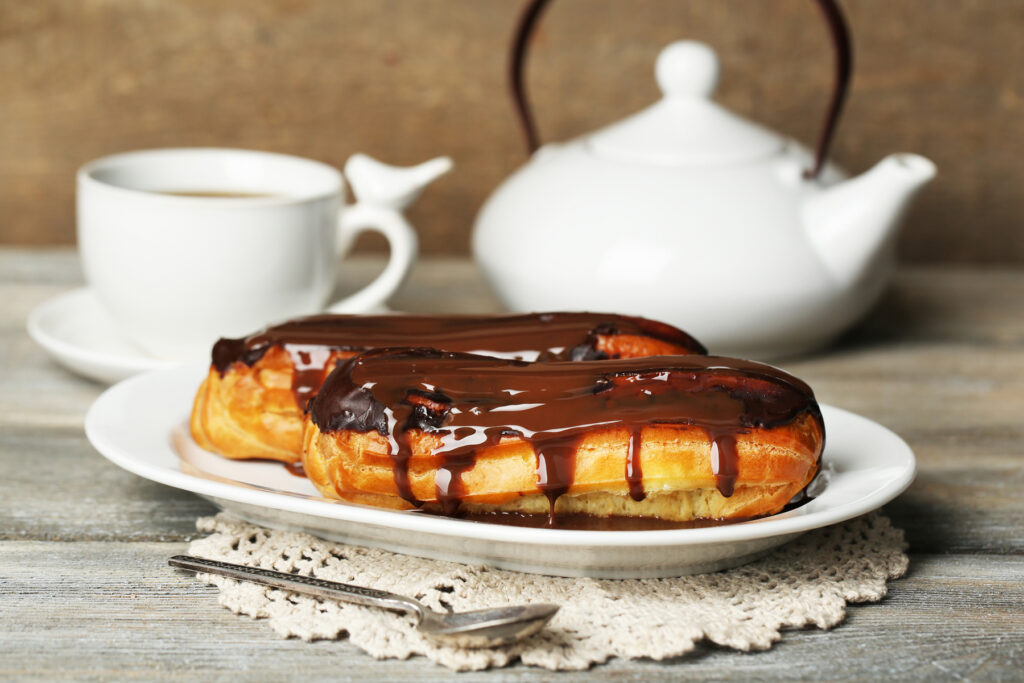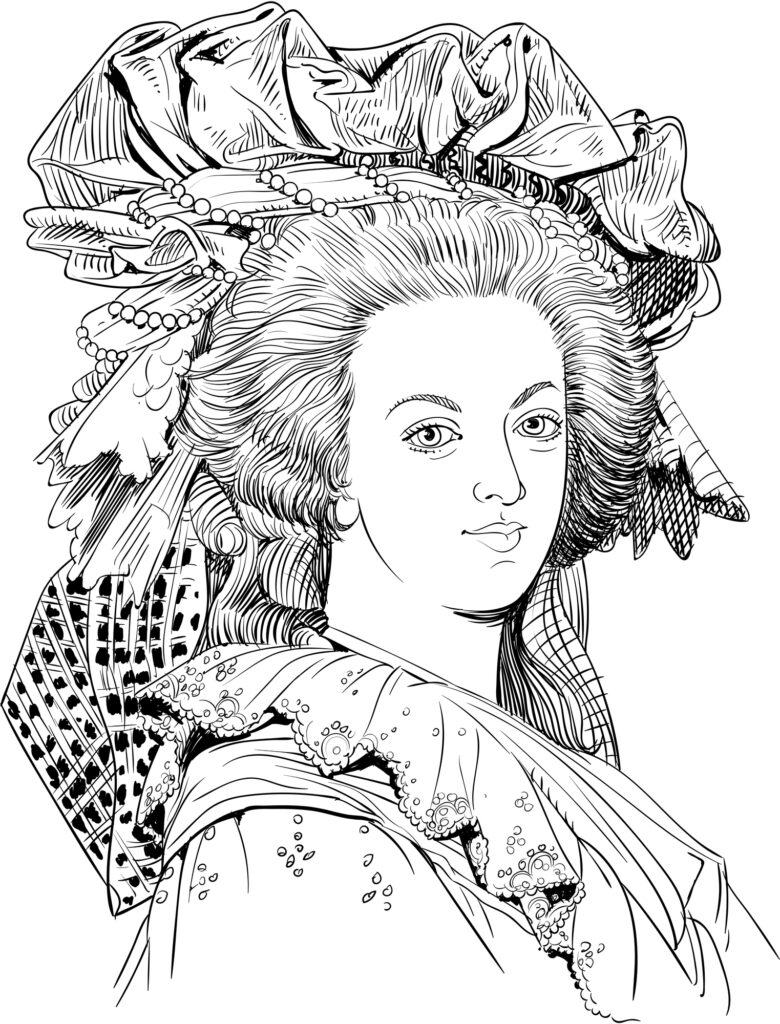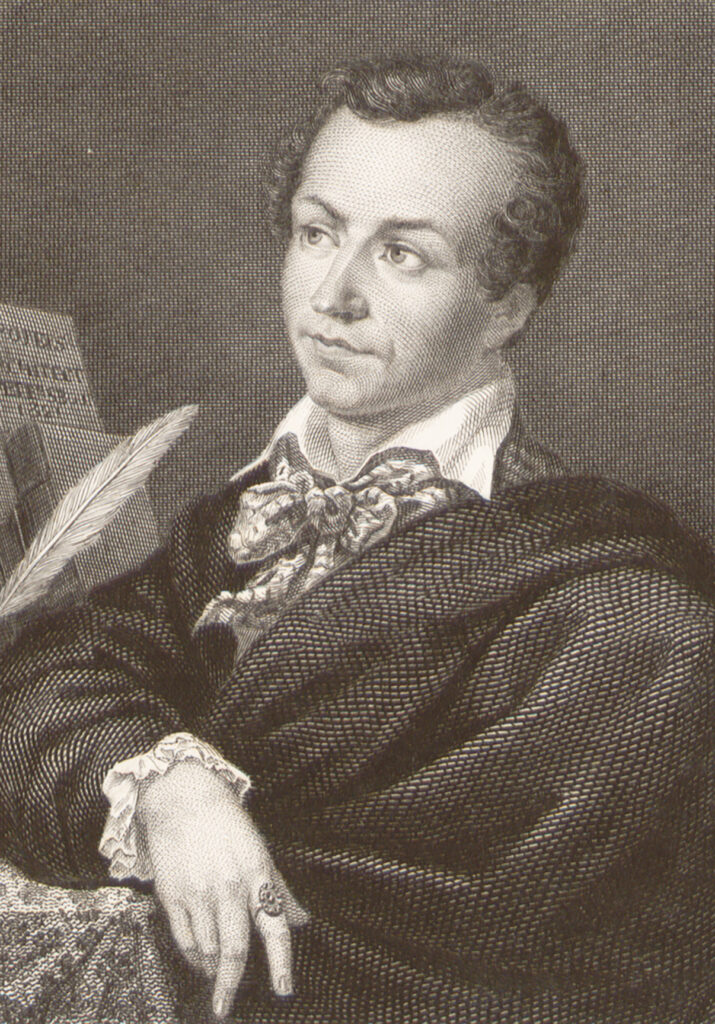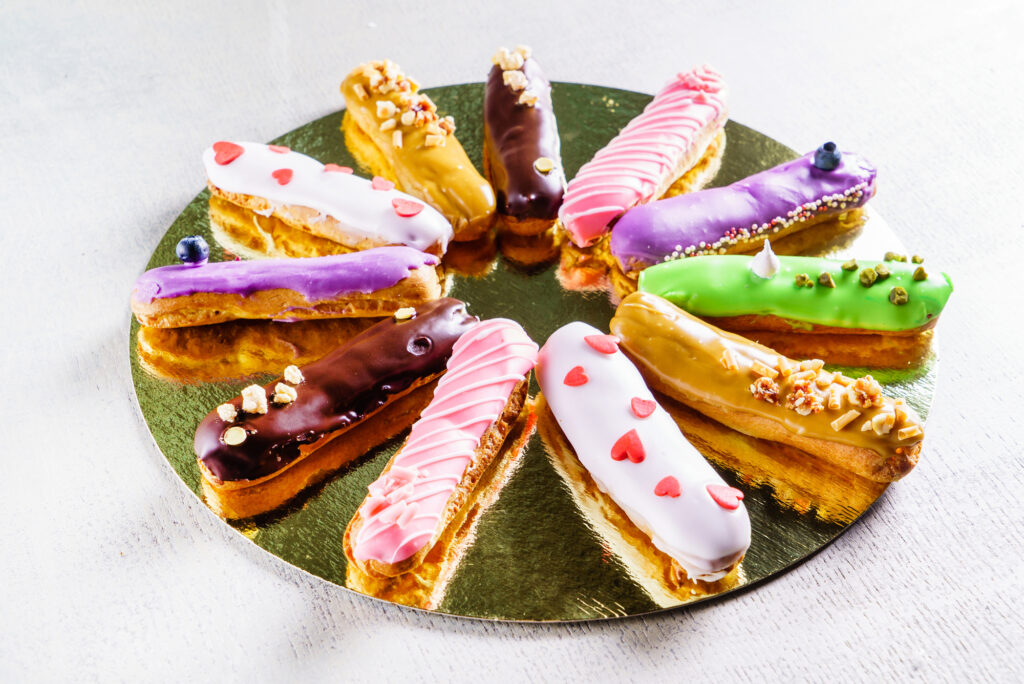What in the world is choux?
Choux is a unique dough made from butter, water, flour, and eggs. There’s no baking powder, soda, or yeast. The dough is mixed and piped into long, finger-like shapes and baked at a high temperature. The steam inside makes it rise. The end result is a hollow golden shell, ready to be filled.
Choux is an old-world pastry that can be traced back to Catherine de Medici, Queen of France (1547-1559) who wanted to impress her subjects. Some argue that it came from the court of Marie Antoinette (below) – the last queen of France before the revolution (1789). She is best known for the questionable rumor claiming she ordered “let them eat cake” when told that peasants were starving.
It wasn’t until the 1800s that Frenchman Marie-Antoine Carême (below), known as the “pastry chef of kings” created the éclair. He also invented the “toque” or chef’s hat, wrote books, and catered banquets for royalty. Many consider him the first celebrity chef and founder of French haute cuisine.
Carême called his dessert pain á la duchessé – made from choux pastry stretched to look like a long finger, filled with custard or fruit jam, and iced with melted sugar.
The éclair, as we know it, was born.
How did pain á la duchessé morph into éclair? There are a lot of stories but no one knows for sure. Éclair is French for lightning. Some say it got that name from the shiny glaze on the top. Others claim that it was so delicious people ate it in a flash. The more pragmatic noted that éclair indicates a bread-based pastry.
Choose your story. It’s all wonderfully the same – a delicious, hard-to-resist filled pastry.
Éclairs made their way to America during the 1860s. In 1861 there was an article in Vanity Fair and three years later a recipe appeared in the Boston Cooking School Cook Book.
Today éclairs are eaten lightning speed around the world. There’s a National Chocolate Eclair Day every June where people try different flavors, go DIY (Do It Yourself), or munch on something new. Nationalchocolateday.com explains why we love éclairs – “it celebrates a famous treat; it celebrates passion; and it makes us happy.”
Who could argue with that?
Carême’s chocolate éclair has taken many twists and turns over the years. Fillings range from pastry cream to mousse and whipped cream to custard. There are even ice cream eclairs. Flavors go from basic chocolate and vanilla to the more exotic pistachio & orange and passion fruit curd cream. Toppings can be simple like powdered sugar and whipped cream or richer like chocolate ganache, fruits, and nuts. Decorations are only restricted by the imagination – sprinkles, shaved chocolate, images of the birthday kid – there are no limits.
There are also savory éclairs. Basically, its choux dough stuffed with tasty fillings like cheese, ham, duck breast, salmon . . . even hot dogs. It’s more like a sandwich than a dessert.
Today you can buy fresh-baked éclairs in your local bakery, have a luscious dessert in a posh restaurant, go DIY, or get them frozen. You can find them in supermarkets which, unfortunately, tell you how many calories in one serving.
Why spoil the fun?
Guinness World Records reports that the fastest time to eat 3 éclairs is 18.02 seconds and the largest image of éclairs is 874 feet.
Amazon offers hundreds of books about éclairs – from cookbooks to C.A. Phipps, Éclairs and Extortion (mystery). You can also buy éclair candies, éclair molds, and tee shirts that read “Éclair is my favorite vegetable.”
Remember, the best way is to relish your yummy éclair is clear.
In a flash.







I love the way you take ordinary food items (although pastries are actually quite extraordinary!) and give them such rich history and entertaining provenance. I particularly enjoy how you trace the development of foods in relation to the famous, or infamous, figures in history that we are all familiar with. Thanks for another excellent and fun article!